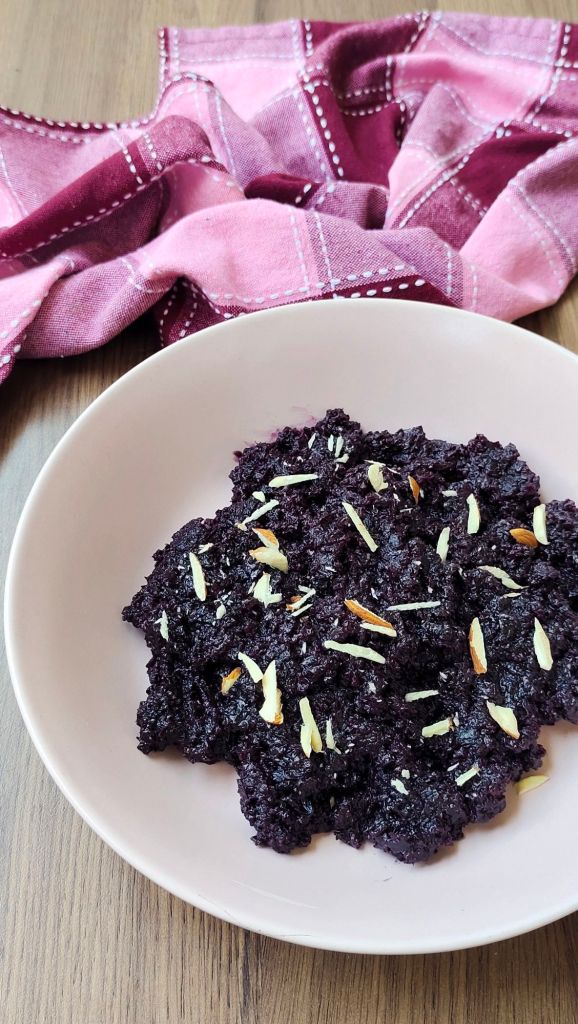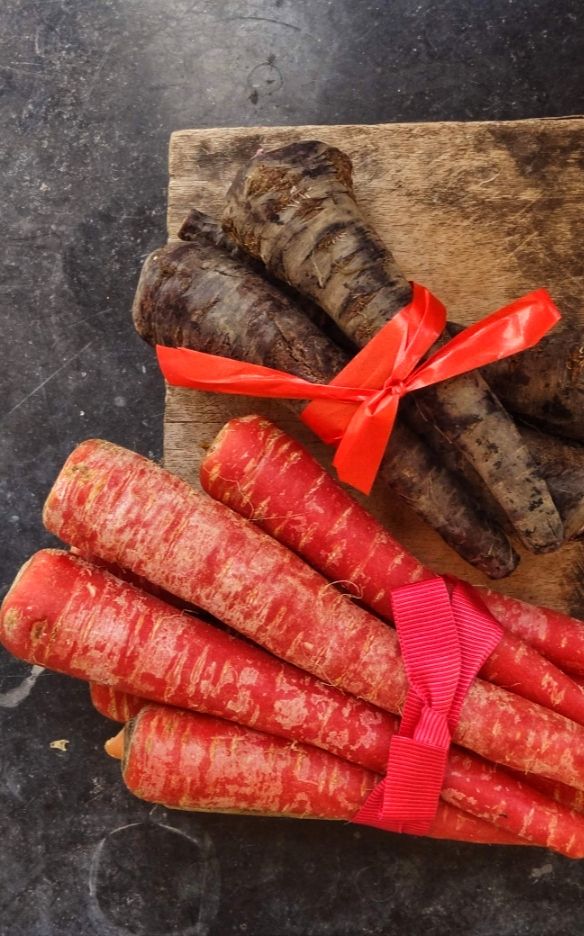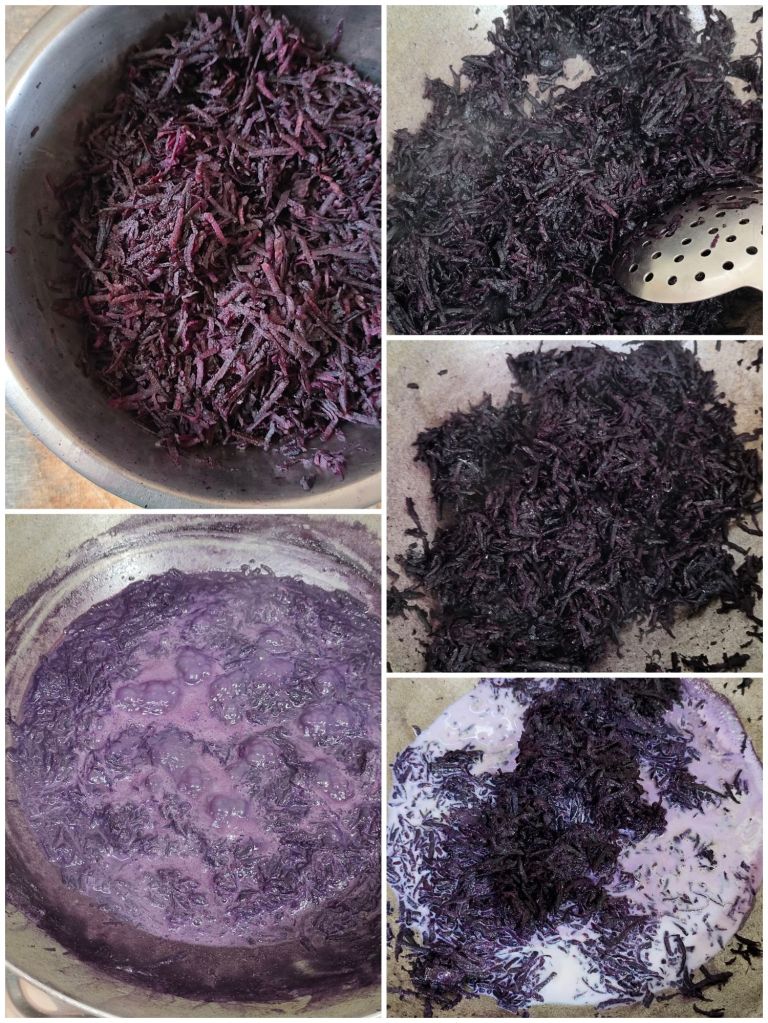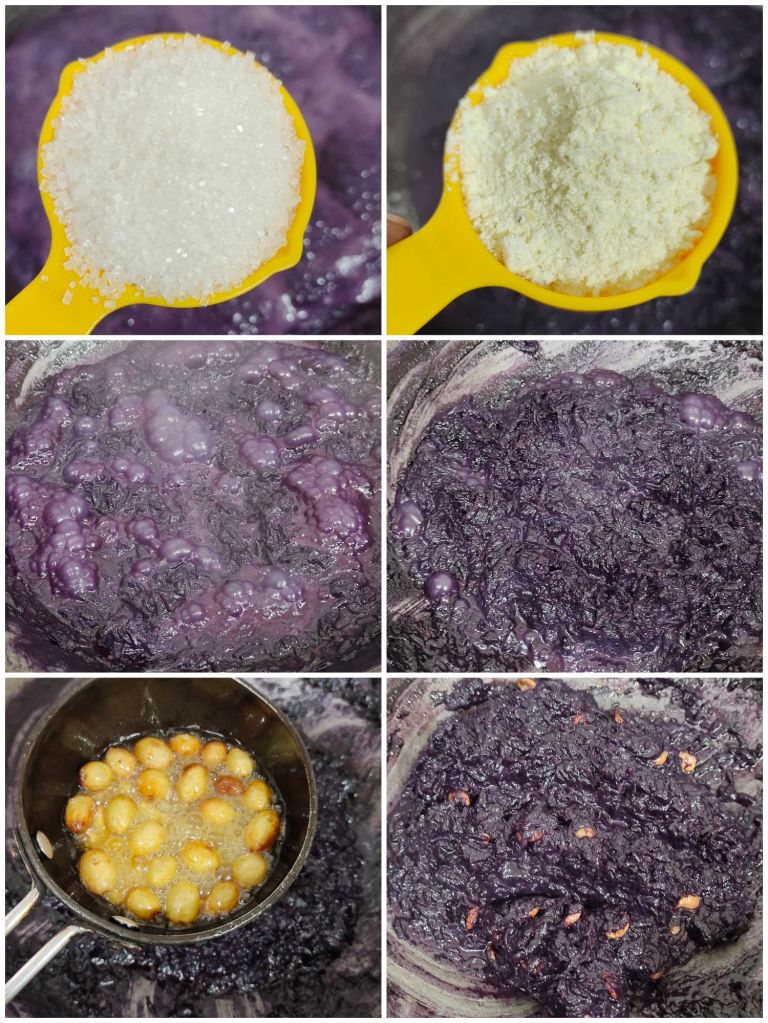Khatta Meetha Kaddu is a traditional semi-dry pumpkin curry, popular in North India, especially Uttar Pradesh. As the name suggests, it is a beautiful medley of sweet and sour flavours, with a mild spiciness. Also called Bhandarewali Kaddu Ki Sabzi or Pethe Ki Sabzi, this curry makes for a great pair with pooris, rotis and even dal-chawal.

Let’s see how to make this very flavourful sabzi at home.
Ingredients Used In This Sabzi
The major ingredient used in the making of this curry is pumpkin, which lends its characteristic sweetish (meetha) taste to the dish. While the curry is typically prepared using the commonly found Indian red pumpkin, I have used butternut squash. There is also a bit of jaggery/sugar added in for extra sweetness.
The khatta or sour taste comes from the addition of amchoor powder. Red chilli powder is added for heat.
This curry is traditionally made using mustard oil, and is tempered using whole spices like mustard, kalonji (nigella seeds), methi dana (fenugreek seeds), zeera (cumin seeds) and saunf (fennel seeds). It is usually garnished with kasoori methi and finely chopped fresh coriander.
Using Butternut Squash In Indian Cooking
I use butternut squash in my cooking extensively. I find it much more easier to prep, faster to cook and much more flavourful than the regular Indian red pumpkin. The vegetable does lend itself beautifully to Indian cooking too – I substitute butternut squash for red pumpkin in almost every dish that requires it.
Check out my recipe for Parangikkai Poriyal, Tamil-style pumpkin curry where I have used butternut squash instead. In this post, I have also outlined how to cut and prep a butternut squash. I use the vegetable in dishes from Tamilnadu like Avial and Parangikkai Rasavangi, as well as in Kerala-style Kootu Curry and Mathan Erissery.
Here, I have used butternut squash to make Mishti Kumror Bhorta, a very flavourful Bengali pumpkin mash.
I have also used butternut squash to make halwa – check out this post!
Khatta Meetha Kaddu Recipe
Here’s how to make this lovely sabzi.
Ingredients (serves 4):
For the tempering:
- 1 tablespoon mustard oil
- 3/4 teaspoon mustard seeds
- 1/2 teaspoon nigella seeds (kalonji)
- 1/2 teaspoon fennel seeds (saunf)
- 1/2 teaspoon cumin seeds (jeera)
- A pinch of fenugreek seeds (methi)
- 2 dry red chillies
- 2 pinches of asafoetida
Other ingredients:
- 1 medium-sized butternut squash, 3 cups when peeled, cleaned and chopped
- Salt to taste
- 1/2 teaspoon turmeric powder
- Red chilli powder to taste
- 1 tablespoon sugar
- 1/2 teaspoon garam masala or to taste
- 1/2 teaspoon amchoor powder or to taste
- 3/4 tablespoon kasoori methi
- 1 tablespoon finely chopped fresh coriander
Method:

1. Cut the butternut squash into halves and peel it. Remove the seeds and fibre. Chop into cubes, and keep ready.
2. Put together the various spices required for the tempering, as listed in the ‘Ingredients’.
3. Heat the mustard oil in a heavy-bottomed pan. Add in all the spices for the tempering. Once the mustard pops, add in the asafoetida.
4. Now, add in the cubed butternut squash, followed by a little salt and red chilli powder. Add the turmeric powder. Mix well. Add in a little water to the pan, about 1/4 cup. Reduce the flame to medium.
5. Cook covered on medium flame for 6-7 minutes or till the squash is almost completely cooked. You will need to uncover the pan intermittently to check on the done-ness, and add a little more water if needed. Stir intermittently to prevent sticking to the bottom of the pan. Cook till the squash is cooked through, but not overly mushy.
6. Taste and adjust the salt and red chilli powder at this stage.

7. Now, add in the sugar to the pan, followed by garam masala and amchoor powder. Mix well.
8. Cook uncovered on low-medium flame for 3-4 more minutes or till the squash is completely cooked and gets a little mushy. Splash a little water if required. Switch off gas when done. Make sure all the water has dried off, and you have a semi-dry sabzi.
9. Rub the kasoori methi between the palms of your hands and add it to the pan.
10. Add in the finely chopped coriander.
11. Mix gently. The Khatta Meetha Kaddu is ready. Serve it warm or at room temperature with rotis, parathas, pooris or any flatbread of your choice.
No-Onion No-Garlic, Vegan Recipe
Khatta Meetha Kaddu is typically prepared in North India on festival days, for poojas, weddings and other auspicious and religious purposes. It is, therefore, made without onion and garlic.
This is a completely vegetarian and vegan recipe, suitable for people following a plant-based diet.
To make this curry gluten-free, simply skip the asafoetida used in the tempering.
Tips & Tricks
1. Adjust the quantity of red chilli powder, salt, garam masala, sugar and amchoor powder as per your taste preferences.
2. I have used sugar to sweeten the sabzi, in the place of which you can use jaggery. Using jaggery will give the sabzi a slightly darker colour, though.
3. It is important to use all the whole spices mentioned above, in the tempering. Each one of them adds a distinct flavour and aroma to the sabzi.
4. If you have panch phoron – the quintessential Bengali whole spice mix – you can use that instead of the tempering ingredients I have mentioned above + the dry red chillies. You can use about 3/4 tablespoon of panch phoron.
5. Make sure the tempering ingredients do not burn. Burning can be avoided by putting together the whole spices needed for the tempering in advance, like I have done here.
6. Splash water as needed while cooking the sabzi, but do not add too much. Add just enough water to help cook the sabzi, but do not make it overly mushy either. The Khatta Meetha Kaddu is supposed to be a semi-dry sabzi.
7. You may add finely chopped ginger and green chillies or ginger-green chilli paste, along with the tempering. However, I usually avoid this.
8. In some households, a dash of roasted coriander powder (dhania powder) is added to the sabzi, along with the garam masala. I usually don’t.
10. Use only amchoor powder to sour this sabzi. Other souring agents do not work.
11. I have used butternut squash here, but you can use the regular Indian red pumpkin if you have access to it.
Did you like this recipe? Do tell me, in your comments!















